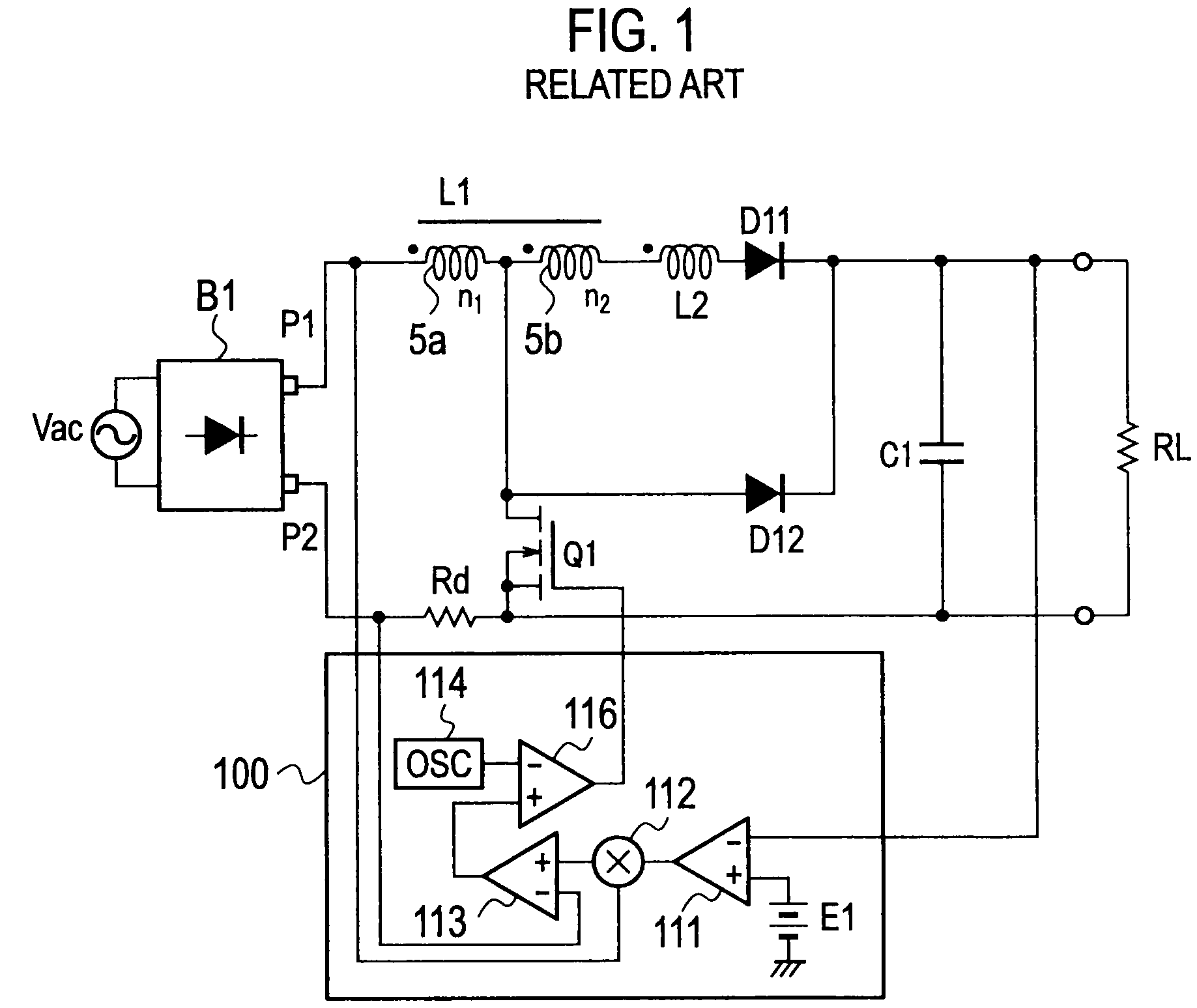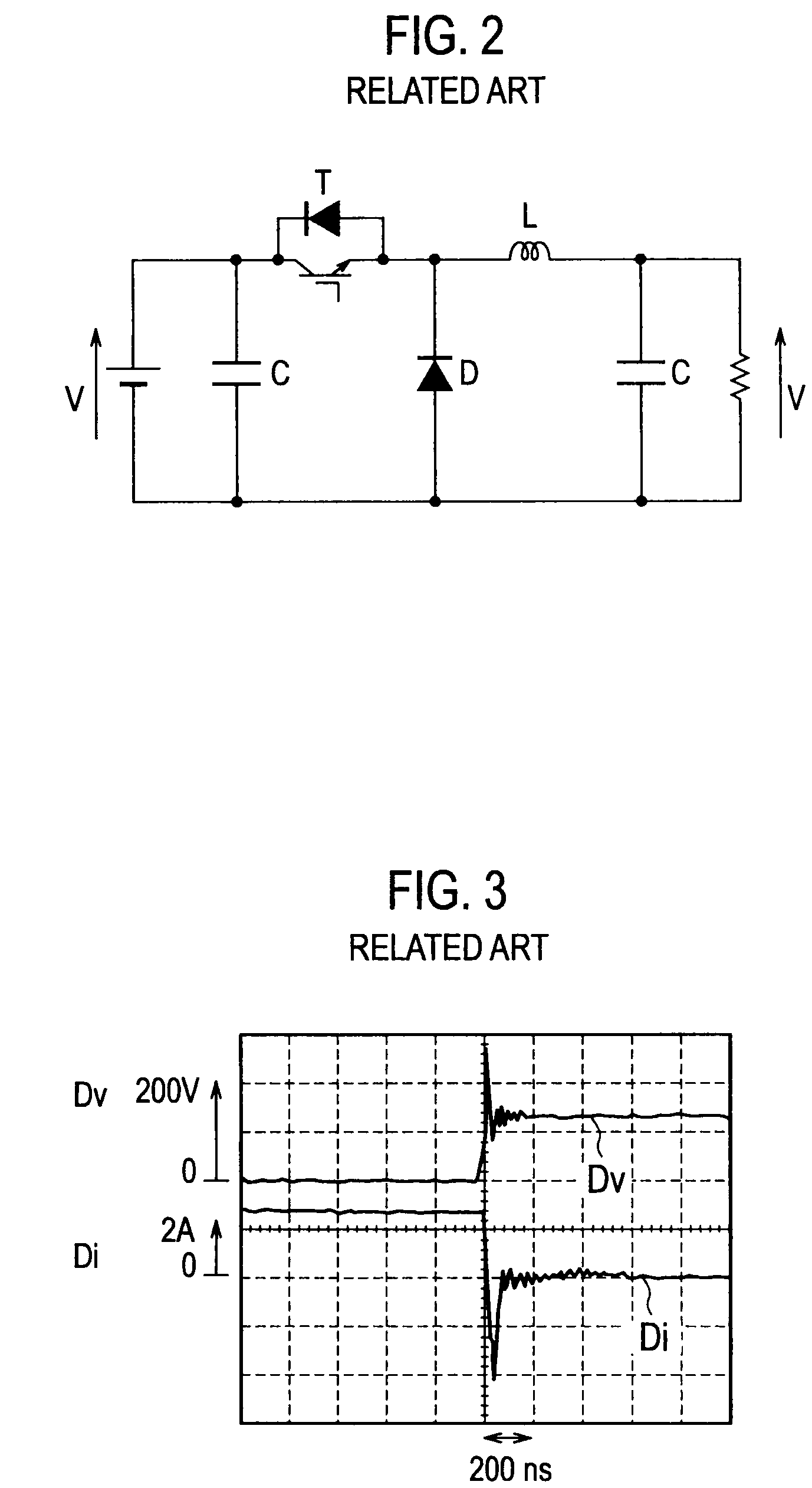Bi-directional DC-DC converter
a dc-dc converter and bi-directional technology, applied in the direction of dc-dc conversion, power conversion systems, instruments, etc., can solve the problem of no way to minimize, and achieve the effect of reducing the recovery loss of a diod
- Summary
- Abstract
- Description
- Claims
- Application Information
AI Technical Summary
Benefits of technology
Problems solved by technology
Method used
Image
Examples
embodiment 1
[0038]FIG. 4 is a circuit diagram illustrating a bi-directional DC-DC converter according to Embodiment 1 of the present invention. The bi-directional DC-DC converter illustrated in FIG. 4 steps up a DC voltage of a first DC power source Vi and supplies power to a second DC power source Vo. Also, the bi-directional DC-DC converter of FIG. 4 steps down a DC voltage of the second DC power source Vo and supplies power to the first DC power source Vi. Namely, the bi-directional DC-DC converter of Embodiment 1 is a step-up chopper circuit provided with a regenerative function so that it operates as a step-down chopper circuit in a regenerative mode.
[0039]In FIG. 4, ends of the first DC power source Vi are connected to a smoothing capacitor Ci and ends of the second DC power source Vo are connected to a smoothing capacitor Co.
[0040]A first reactor LT has a first winding 1a of n1 as the number of turns and a second winding 1b of n2 as the number of turns. The first and second windings 1a a...
PUM
 Login to View More
Login to View More Abstract
Description
Claims
Application Information
 Login to View More
Login to View More - R&D
- Intellectual Property
- Life Sciences
- Materials
- Tech Scout
- Unparalleled Data Quality
- Higher Quality Content
- 60% Fewer Hallucinations
Browse by: Latest US Patents, China's latest patents, Technical Efficacy Thesaurus, Application Domain, Technology Topic, Popular Technical Reports.
© 2025 PatSnap. All rights reserved.Legal|Privacy policy|Modern Slavery Act Transparency Statement|Sitemap|About US| Contact US: help@patsnap.com



